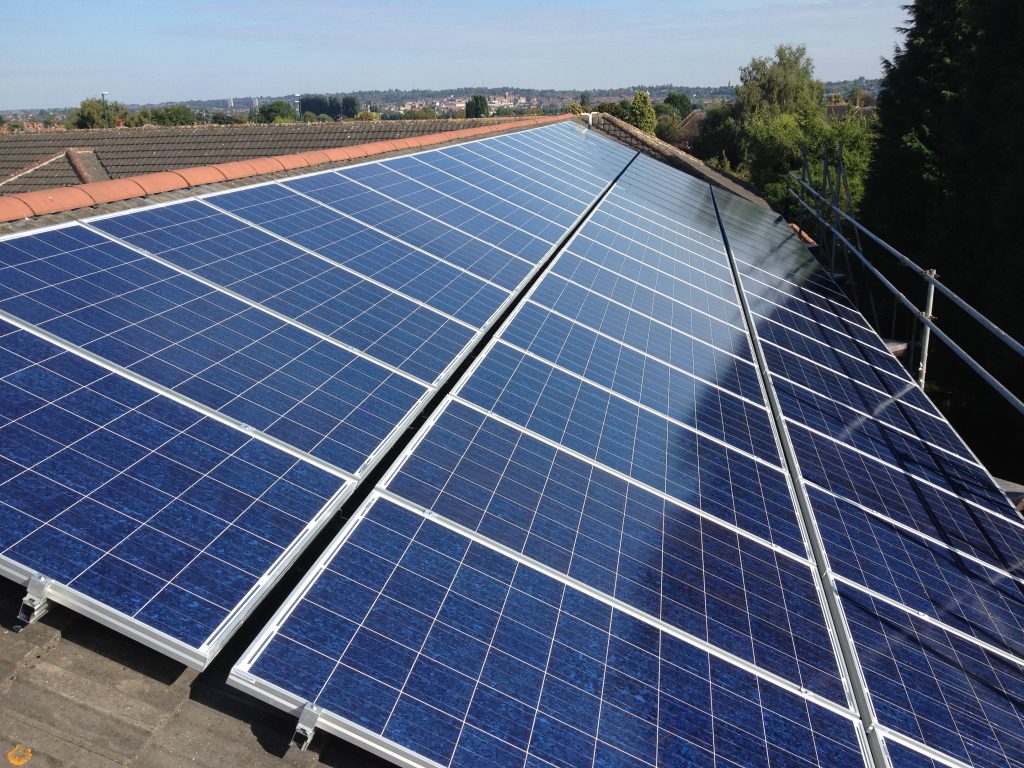2019 has been a year marked by the climate debate with Extinction Rebellion protests taking over the streets, the European Parliament declaring a climate emergency and the UN reporting that greenhouse gases have hit an all-time high.
Reducing carbon emissions has been a big focus of this debate and switching to renewable energy is key in terms of energy generation. There has never been a better, or more important, time for the construction industry to get serious about renewable energy.
James Cunningham, Sales Director at renewable energy specialists Geo Green Power, explains why:
“Any construction with roof space, outside space or both; that has a requirement for heating or lighting is a candidate for renewable energy. Retrofitting renewable systems is always an option, but if you can plan them into a new build or refurbishment it’s always better in terms of efficiency and materials!
“Incorporating solar panels into a new roof saves on roofing materials and will deliver free electricity during daylight hours to the building’s occupants for years to come. This helps to avoid utility cost rises and dramatically reduces the building’s overall carbon footprint – a relatively small domestic scheme can save up to 4 tonnes of CO2 a year. To put that in context, a family sized car emits approximately 5 tonnes per annum.
“Depending on a building’s purpose, daytime energy usage might not be what’s required, but here’s where companies like Geo Green Power come in to design and install bespoke schemes that deliver cost benefits and carbon savings. When we design a system we look to deliver ROI in around five years. With high daytime energy usage solar PV delivers this on its own in almost every situation, but if evening or night-time energy usage is needed or there is a heating requirement, technologies can be combined to deliver the same or even greater returns.
“Surface area is key for solar, and if enough space is available a scheme can be designed to provide the energy required by the property, or to deliver a surplus which future-proofs a building’s renewable energy supply and provides an income in terms of selling back power to the grid. Daytime energy production can be paired with battery storage, which is improving dramatically in terms of performance and cost, to provide energy at other times of the day and to allow for options such as overnight Electric Vehicle charging.
“The increasing numbers of EVs on our roads means that a surplus of renewable energy at any residential or business premises can easily be allocated to an increasing demand for vehicle charging. In some cases, the requirement for additional electricity may be beyond the local grid connections available and installing off-grid energy may be the only option.
“A free solar energy supply could also power ground source or air source heat pumps which take heat from the ground or air and use an electric pump to boost the temperature for hot water and central heating. In this way they multiply 1kW of electrical energy into 3 or 4 kWs of heat energy, which can really maximise any additional solar energy being produced. As we experience higher summer temperatures it’s worth noting that air source heating systems can also be used as air conditioning units when you want to expel heat.
“Renewable heating currently qualifies for the Renewable Heat Incentive, which means that payments are received for all of the heat that is generated by eligible systems. Rates for domestic and commercial properties are incredibly attractive and can pay back the entire cost of the system during the lifetime of the scheme.

“Aside from the financial and cost saving benefits, installing even one solar panel will help to reduce a building’s carbon footprint. Individuals and businesses have a responsibility to react to latest reports on the climate crisis and work to improve the world we live in. As a business we have installed over 31MW of renewable energy systems and we estimate that these systems are currently saving over 12,200 tonnes of CO2 a year. There is huge work to be done, but nobody should underestimate the carbon emission reductions that can be achieved with renewable energy systems.”

